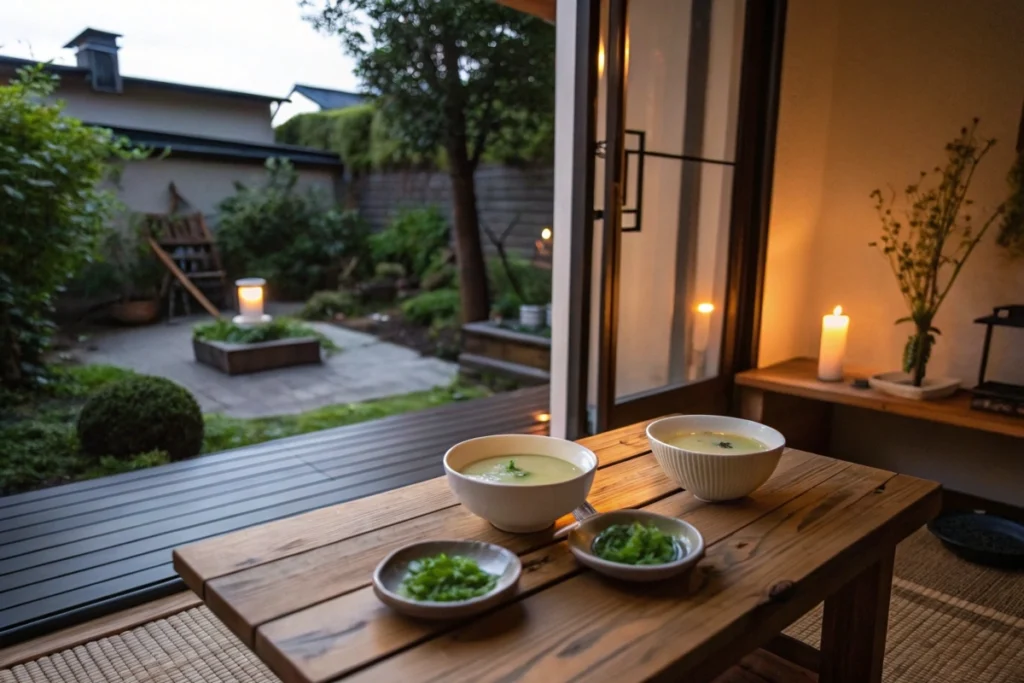Introduction
Have you ever come across the term miyabi in a Japanese restaurant menu and wondered what it signifies? If you’re curious about what is miyabi food in japanese, this comprehensive guide will immerse you in the concept of miyabi—a refined, graceful aesthetic that has influenced Japanese culture for centuries. While Japanese cuisine is often associated with simplicity, balance, and fresh ingredients, miyabi brings an added layer of elegance and subtlety to dishes, emphasizing culinary artistry as much as flavor.
The miyabi ethos extends beyond food. It’s an overarching cultural principle that seeks beauty, delicacy, and grace in every aspect of life—from clothing to poetry, from architecture to interpersonal relations. Yet, in the culinary world, miyabi manifests as carefully presented plates, harmonious taste combinations, and minimalist table settings. Chefs who embrace miyabi take into account not just the taste, but also the textures, colors, and plating sequence to evoke serenity and sophistication.
This in-depth exploration will guide you through the origins of miyabi, how it’s applied in cooking, and tips on adding miyabi-style flair to your meals. If you’re looking to master Japanese aesthetics or simply upgrade your dinner table vibes, you’re in the right place. For even more inspiration on Japanese cuisine, check out discover Japanese recipes that combine modern convenience with traditional techniques.
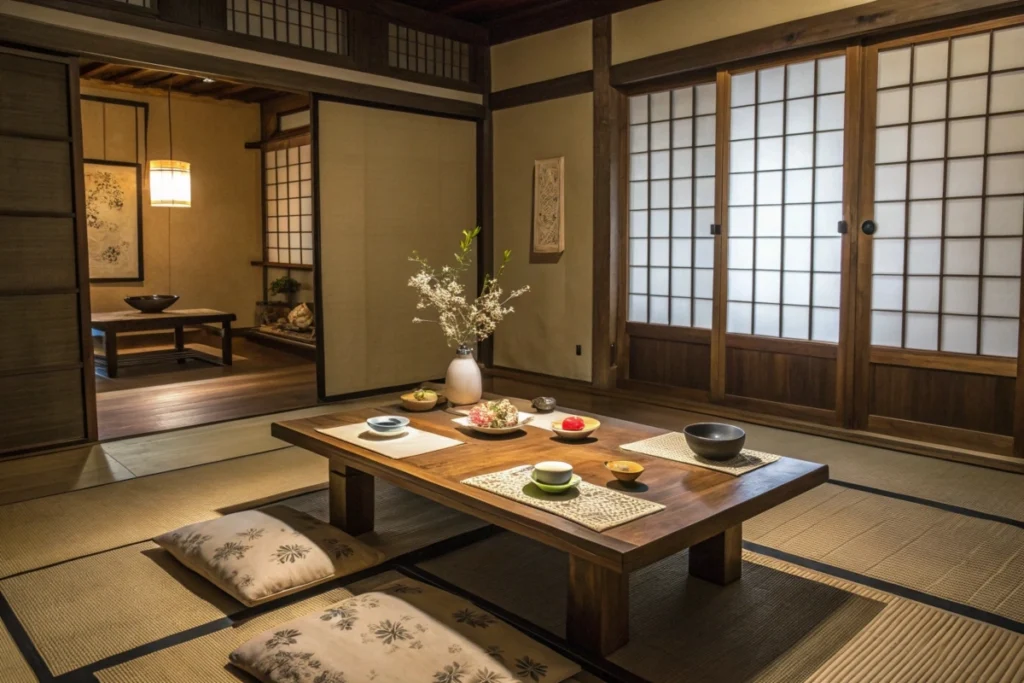
1. Defining Miyabi: The Essence of Japanese Refinement
To understand what is miyabi food in japanese, we first need to explore the core meaning of miyabi. The term miyabi (\u5FA1\u5F69) traditionally refers to “elegance” or “refinement,” embodying a sophisticated aesthetic that aims for an ideal beauty. Rooted in aristocratic culture of Heian-era Japan (794–1185), miyabi goes beyond superficial appearances to influence literature, fashion, and yes, even cuisine.
The Pillars of Miyabi
- Graceful Simplicity
While wabi-sabi focuses on rustic simplicity and imperfection, miyabi highlights polished refinement. This means each dish or object is meticulously crafted to project beauty and gentility. - Attention to Detail
From the color contrast on a plate to the shape of each garnish, miyabi requires a keen eye for detail. Chefs might cut vegetables into delicate shapes or arrange them in symmetrical patterns to illustrate aesthetic harmony. - Seasonal Awareness
Like other Japanese philosophies, miyabi is deeply tied to the seasons. Foods, decorations, and even the type of serving ware shift to mirror the blossoming spring or the fiery hues of autumn.
Cultural Overlaps
Iki, wabi-sabi, and seijaku (tranquility) are other Japanese concepts sometimes confused with or complementary to miyabi. For example, iki denotes chic stylishness, while wabi-sabi finds beauty in imperfection. Miyabi stands out by focusing on an aristocratic polish—a graceful, almost regal approach to aesthetics.
Miyabi in Cuisine
When integrated into culinary arts, miyabi influences how chefs plate dishes, choose ingredients, and even arrange the dining environment. Bowls and plates often feature understated patterns, while sauces are drizzled sparingly to accentuate natural colors. This approach can extend to menu design, with each course building on the previous one in a measured progression that flows smoothly.
If you’re looking to infuse miyabi into your home cooking, consider starting with something like miyabi soup (often a clear broth with delicately cut vegetables and tofu). Simplify your presentation and emphasize fresh, quality produce. For more refined recipes, browse traditional Japanese desserts that uphold a similar balance of sweetness and subtlety.
Overall, miyabi is not just about looking refined; it’s about creating an environment and experience that resonate with quiet grace. By grasping miyabi’s fundamental principles, you’ll see how it underpins a wide array of Japanese traditions, including the realm of exquisite food.
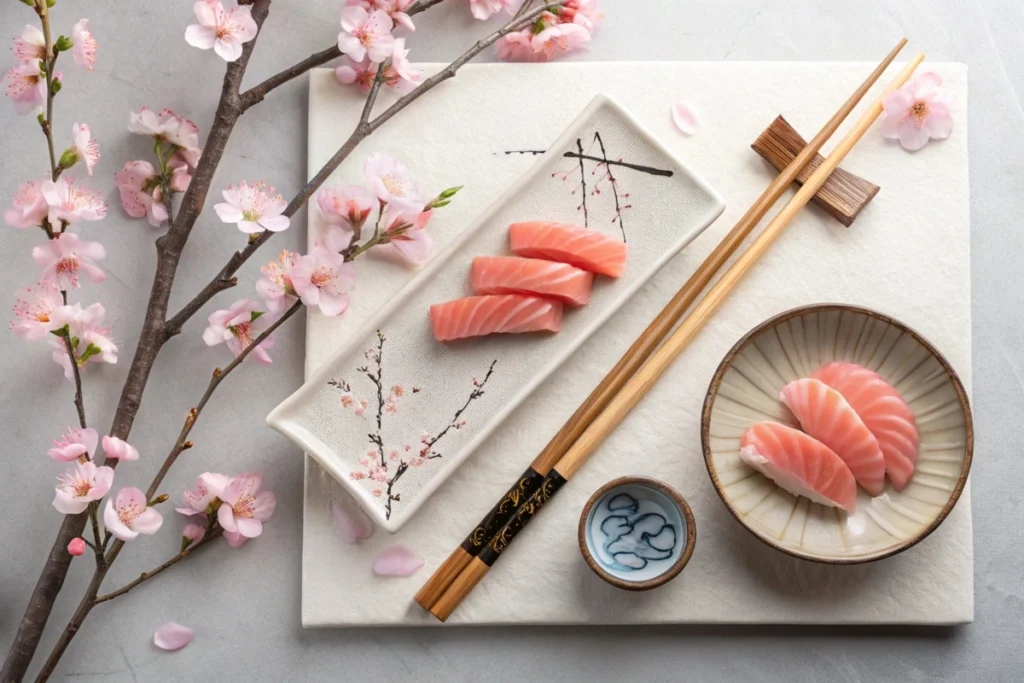
2. Miyabi in Culinary Traditions: Principles & Practices
Once we understand what miyabi signifies, the next step is to see how it appears in actual cooking. What is miyabi food in japanese? It’s an approach that harmonizes minimalism, aesthetics, and refined taste. Below are the major principles shaping miyabi-inspired kitchens.
1. Select Premium Ingredients
Quality triumphs over quantity. Like many forms of Japanese cuisine, miyabi highlights each component’s natural flavor. Whether it’s fresh fish for sushi or organically grown vegetables, the best ingredients allow subtle nuances to shine.
2. Meticulous Prep & Presentation
Miyabi chefs might spend hours preparing delicate garnishes or slicing fish to perfection. Even a bowl of onion soup can embody miyabi if it’s served in a minimalist porcelain bowl, garnished with finely chopped scallions. Some restaurants, like the famed Miyabi Japanese spots, lean into these practices to craft signature items such as miyabi soup or elegantly arranged sashimi platters.
3. Balancing Flavors & Textures
Taste is not overshadowed by visual flair. In miyabi cooking, a dish’s taste, texture, and appearance are equally prioritized. Chefs often combine flavors that complement each other—like mild dashi-based broths with lightly seasoned proteins.
4. Seasonal & Local Emphasis
Similar to kaiseki dining, miyabi cuisine draws heavily on what’s fresh. In spring, you might see cherry blossom–themed dishes or edible flowers. Autumn could feature mushrooms and chestnuts. Embracing seasonality ensures menus never stagnate.
5. Ceremony & Atmosphere
Beyond the plate, miyabi also dictates the dining atmosphere. Think subdued lighting, calm music, and carefully curated tableware. The objective is to envelop diners in an aura of peaceful sophistication.
For a more hands-on demonstration, consider reviewing Japanese steak recipes where chefs emphasize subtle marinades and precise cooking to maintain a refined taste.
Kitchen Tools & Techniques
- Sharp Knives: Proper slicing and dicing are vital in miyabi cooking to achieve uniform, visually pleasing pieces.
- Garnish Tools: Small chisels or specialized cutters help carve decorative shapes from vegetables.
- Broth & Sauce Making: Mastery of dashi forms the backbone of many soups and sauces, enhancing flavor without overpowering the dish’s purity.
A miyabi-inspired dinner menu might start with a clear soup garnished with a single blossom-shaped carrot slice, followed by a sashimi course presented in a symmetrical pattern, and end with a delicate dessert featuring seasonal fruit. This progression ensures each phase remains understated yet deeply flavorful.
By integrating these principles, home cooks can easily replicate the refined aura of miyabi. Focus on simplicity, natural flavors, and measured visual design. The result? A dining experience that merges tradition, artistry, and a quiet sense of luxury.
3. Popular Miyabi Dishes and Modern Interpretations
While miyabi cooking remains rooted in timeless traditions, contemporary chefs have introduced new spins to cater to evolving tastes. Here are some hallmark dishes and their modern adaptations that illustrate what is miyabi food in japanese in today’s context.
1. Miyabi Soup (Often a Delicate Onion Broth)
Common in certain restaurants labeled as “Miyabi Japanese” or “Miyabi’s Charleston,” this soup might feature a clear dashi or chicken-stock base enhanced with caramelized onions, mushrooms, or other vegetables. The goal is to deliver depth of flavor without heaviness. Modern versions could incorporate miso for an umami boost or add a swirl of truffle oil for a luxurious twist.
2. Chawanmushi (Steamed Egg Custard)
Steamed egg custard is a quintessential example of subtle taste and texture. Traditional chawanmushi might contain small pieces of chicken, shrimp, or ginkgo nuts. A miyabi variant could highlight premium ingredients like crab or scallops and garnish with edible gold leaf or microgreens for added elegance.
3. Minimalist Sushi & Sashimi
While all sushi can embody miyabi, certain preparations stand out. Think: a single, immaculately cut slice of toro (fatty tuna) brushed with soy sauce, or sashimi served in a symmetrical pattern on a white ceramic plate. Contemporary twists might introduce micro-herbs or spicy yuzu kosho for flavor contrast.
4. Refined Tempura
In a miyabi-style restaurant, tempura is served with minimal batter and carefully balanced toppings. Instead of an array of heavy-fried items, the chef might select just three or four vegetables or shrimp, each placed on an individual dish with a small dish of salt. The result is crispness that underscores the natural flavors.
5. Artistic Desserts
Even sweet treats reflect miyabi. Modern pastry chefs combine French techniques—like mousse or mille-feuille—with Japanese flavors such as matcha, azuki beans, or black sesame. The plating remains understated, using geometric lines of sauce or a single edible flower to highlight the dessert’s focal point.
For more dessert inspiration that harmonizes with miyabi, browse Japanese dessert recipes that incorporate subtle sweetness rather than overwhelming sugar.
By weaving modern ingredients and global influences into these classic forms, chefs preserve the essence of miyabi while keeping it relevant. This fusion ensures miyabi remains a vibrant, adaptable concept, bridging ancient aristocratic sensibilities with today’s culinary innovations.
4. Incorporating Miyabi into Your Home Cooking
You don’t need a Michelin-star kitchen to imbue your meals with miyabi flair. If you’ve wondered what is miyabi food in japanese and how to replicate it, here are practical steps and tips for at-home cooks:
1. Embrace the Art of Plating
Start by selecting neutral, elegant plates—white or pastel hues let colors pop. Keep garnishes minimal. A single sprig of parsley, a sliver of pickled ginger, or a single edible flower can make a statement. Focus on spacing to avoid clutter, placing each element purposefully.
2. Opt for Quality Over Quantity
Choose top-tier ingredients. If preparing fish, buy sushi-grade cuts. For produce, visit a local farmers’ market. Even with staples like rice, opt for premium short-grain varieties. The difference is noticeable, especially when flavors are subtly layered.
3. Subtle Seasoning Is Key
In miyabi-inspired recipes, you won’t find heavy sauces drowning the dish. Instead, use light, balanced seasonings. A drizzle of soy sauce or a hint of yuzu juice can elevate taste without overshadowing the natural essence of each component. If you need marinade ideas, explore Japanese barbecue sauce recipes for guidance.
4. Mindful Cooking Techniques
- Steaming & Poaching: Gentle methods that preserve color and texture.
- Light Frying: If you must fry, do so with minimal batter. Tempura or karaage rely on clean oil and short frying times.
- Searing & Quick Sauté: Lock in flavors without overcooking or letting sauces become too heavy.
5. Balanced Meal Composition
A miyabi meal typically features multiple small courses. You could start with a delicate soup, move on to a plate of sashimi or lightly grilled fish, and finish with a fruit-based dessert. This progression ensures no single course overwhelms the senses.
6. Elevate the Dining Experience
Set the mood with soft lighting, use cloth napkins in neutral tones, and place a small vase with a single bloom on the table. If you’d like to add a cultural touch, play gentle koto or shamisen music in the background.
7. Practice Restraint
The hallmark of miyabi is “less is more.” Avoid piling plates high or over-decorating. Step back and assess if any element distracts from the overall harmony. This includes portion sizes—serving smaller, elegant portions encourages mindful eating.
By following these guidelines, even everyday cooking can be transformed into a refined affair. The essence of miyabi lies not in extravagance but in selective, thoughtful choices that champion quality, beauty, and emotional connection in each dish.
5. Miyabi Soup & The Rise of Restaurant Culture
If you’ve dined at a “Miyabi Japanese” restaurant—perhaps a local spot named Miyabis Charleston—you might have encountered a signature miyabi soup or miyabi onion soup. This dish epitomizes the clarity and grace that define what is miyabi food in japanese. Let’s delve deeper into the rise of these specialized eateries and how miyabi soup became a talking point.
What Is Miyabi Soup?
Often a simple, clear broth featuring onions, mushrooms, and sometimes small noodles or tofu, miyabi soup focuses on understated flavors. The onions are typically simmered to release sweetness, while the broth maintains a light, translucent quality. Some variations add scallions, sesame seeds, or a dash of soy sauce, aligning with miyabi principles of minimal yet impactful seasoning.
Restaurant Culture and the Miyabi Brand
In many Western countries, “Miyabi” has become a buzzword, associated with elegance. Restaurants named “Miyabi Japanese” aim to blend traditional Japanese dining with a refined ambiance—dim lighting, tasteful décor, and softly playing music. Menu items might list “Miyabi Soup” or “Miyabi Roll,” signifying that these dishes adhere to an aesthetic standard of polished simplicity.
Transition to Multi-Course Meals
Though some Miyabi-branded restaurants offer hibachi grilling or fusion items, the core concept revolves around smaller, carefully crafted plates. They might feature a sake bar with premium selections or a dessert menu focusing on matcha-infused sweets. This approach caters to diners seeking a more upscale, leisurely experience compared to a quick sushi grab.
Spreading the Miyabi Concept
Social media and food blogs have popularized miyabi soup beyond specialized eateries. Amateur cooks share their onion-soup adaptations, sprinkling in elements like seaweed or miso. Meanwhile, traveling foodies discuss the serene aura and immaculate plating they encounter at Miyabis Charleston or similar establishments. If you’re intrigued, you can pair miyabi soup with other refined dishes like a Japanese scallop recipe, sustaining the elegant theme across courses.
Future Outlook
As global interest in Japanese cuisine grows, the concept of miyabi continues to inspire new restaurants and home cooks alike. Whether it’s a pop-up serving onion soup in delicate porcelain bowls or a high-end hotel offering miyabi tasting menus, this aesthetic isn’t just a passing trend. Its timeless devotion to quality, beauty, and subtlety resonates with gastronomes worldwide, ensuring miyabi’s enduring role in culinary evolution.
6. The Aesthetics of Miyabi: Decor, Presentation & More
While miyabi primarily addresses taste and plating, the broader environment also plays an integral role. What is miyabi food in japanese if not a holistic experience that merges visual, auditory, and even spatial elements to achieve elegance? This final main section will guide you through weaving miyabi aesthetics into your table settings, home décor, and overall dining atmosphere.
Decor Elements
- Color Palette: Soft neutrals like cream, beige, or pale green create a calm backdrop. Accents of gold, pink (sakura), or muted red can highlight focal points without overpowering.
- Tableware: Opt for minimalist ceramic plates or lacquered trays with subtle patterns. Ornate or heavily printed dishware might clash with the refined simplicity you aim for.
- Floral Arrangements: A single stem of seasonal flowers—perhaps a cherry blossom branch or a lone lily—can be more impactful than a lavish bouquet. The minimal approach epitomizes miyabi’s ethos.
Presentation Techniques
- Geometry & Symmetry: Plates often use symmetrical or balanced arrangements, drawing the eye to the center or specific garnish points.
- Height & Layers: Even in minimal plating, slight elevation—like a small garnish on top of sashimi—adds dimension.
- Negative Space: Leaving white space on the plate can accentuate the food’s shape and color, underscoring the theme of restraint.
Ambiance & Music
A miyabi-inspired dinner might involve soft instrumental music, such as koto or shamisen tunes. Lighting should be warm yet gentle—consider small lanterns or dimmable overhead lights. The goal is to create an environment that allows guests to focus on the subtlety of each dish.
Harmony with Modern Lifestyles
Though miyabi is an ancient concept, it adapts well to contemporary settings. You can seamlessly blend sleek, modern furniture with a few traditional Japanese elements. If you’re hosting a dinner for friends, incorporate conversation pieces—like a short description of what miyabi means or the inspiration behind each dish. This small educational touch can deepen appreciation for the meal.
To expand your knowledge of refined Japanese dining experiences, you might consult Japanese fish recipes that emphasize freshness and minimal seasoning. Creating a multi-course meal that progresses from soup to fish to dessert can fully showcase miyabi principles.
In sum, the aesthetics of miyabi revolve around balanced simplicity, carefully chosen décor, and an overall sense of tranquility. It’s about accentuating beauty rather than drowning it in excess. When carried out thoughtfully, even an everyday dinner can transform into a serene culinary event.
History & Context of Miyabi Cuisine
To fully appreciate what is miyabi food in japanese, we must delve into the cultural and historical backdrop that shaped this elegant style. Miyabi has its roots in Japan’s aristocratic society, particularly during the Heian period (794–1185). This era birthed a refined court culture where literature, clothing, and protocol all aimed for elevated taste and elegance.
Heian Period Aristocracy
In the Heian court, royals and high-ranking officials sought to distance themselves from the “ordinary” world. Through refined language, poetry, and visual arts, they created a microcosm of beauty and manners. Miyabi was the term used to describe this sophisticated way of life, encapsulating polished behavior, subtle wit, and an appreciation for ephemeral beauty—like that of cherry blossoms or the fleeting aroma of incense.
Literary Influence
Miyabi found its expression in classic Japanese literature. Works like The Tale of Genji (Genji Monogatari) portrayed characters obsessed with aesthetic perfection. Meals described in these texts often revolved around seasonal produce, served in courses that harmonized colors and flavors.
Culinary Developments
Despite the limited variety of imported goods during early centuries, Heian-era aristocrats cultivated refined cooking methods using local ingredients. Palatial banquets featured multiple small plates, each meticulously arranged. Over time, these practices trickled down to different social classes, but the concept of miyabi remained largely associated with the upper echelons. As centuries passed, influences from Zen Buddhism, samurai culture, and foreign trade introduced new flavors and cooking styles—yet miyabi retained its aristocratic connotation.
Modern Evolution
During Japan’s modernization in the Meiji era (1868–1912), Western influences began to mix with miyabi aesthetics, leading to new forms of dining elegance. High-end restaurants adopted Western silverware but maintained the discreet, delicate plating hallmark of miyabi. Today, global exposure to Japanese cuisine means that refined dishes—like kaiseki or miyabi-inspired sushi—are accessible worldwide. Chefs in Tokyo, Paris, and New York experiment with miyabi by fusing local produce with Japanese presentation techniques.
Cultural Relevance Today
In an age of fast food and convenience, miyabi stands as a reminder of deliberate, mindful living. It’s celebrated in upscale Japanese restaurants, specialty cooking shows, and even modern teahouse experiences. Some establishments market themselves under “Miyabi” branding to signal an elevated take on Japanese fare. This continuity—traversing from ancient court banquets to contemporary fine dining—proves miyabi remains a vital thread weaving through Japan’s cultural tapestry.
***Create a horizontal timeline:
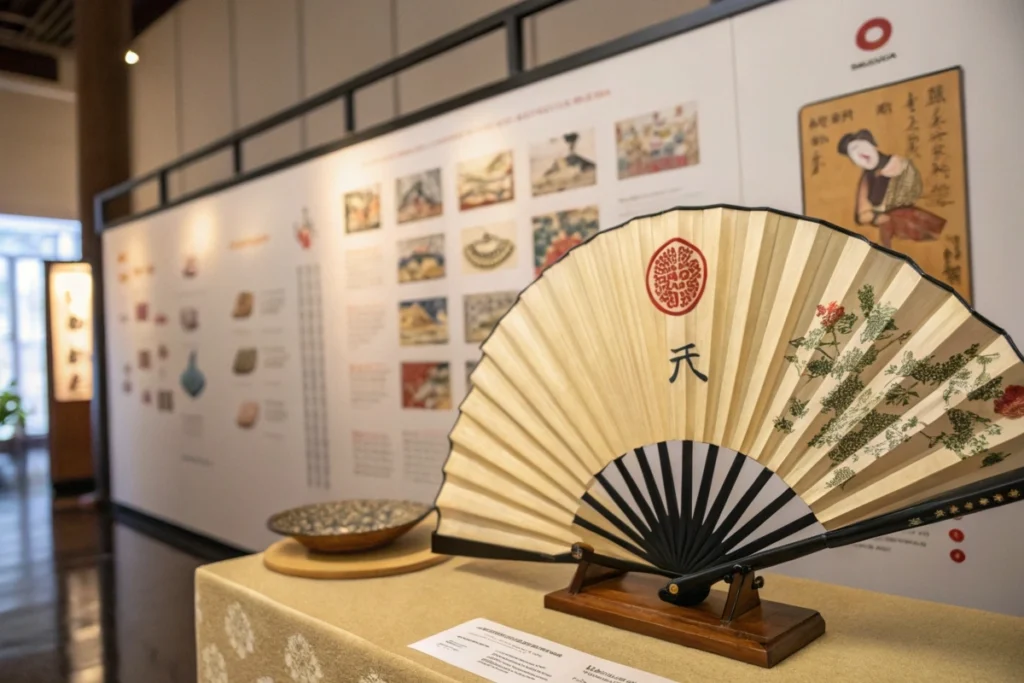
Practical Examples & Use Cases
Scenario 1: Hosting a Miyabi-Inspired Dinner
A home cook wants to impress friends with an evening of refined Japanese cuisine. She starts by making a clear miyabi soup with delicately sliced onions, served in minimalist white bowls. The main course is grilled fish accompanied by pickled vegetables cut into flower shapes. For dessert, a simple matcha panna cotta garnished with a single mint leaf completes the meal. Soft koto music plays in the background, and the table is adorned with one small vase of cherry blossoms. Guests feel transported into a tranquil, elegant setting.
Scenario 2: Miyabi-Inspired Restaurant Launch
An entrepreneur opens a boutique Japanese restaurant in a bustling city. She names it “Miyabi Fusion” to signal a blend of traditional Japanese refinement and modern global influences. Diners can order classic sashimi platters arranged with symmetrical precision, or they can try a “Miyabi Roll” featuring fresh local produce and a light citrus drizzle. The ambiance includes soft lighting, gentle background music, and carefully chosen tableware with a neutral color palette. Word of mouth spreads quickly about the restaurant’s serene atmosphere and beautifully plated dishes.
Scenario 3: Miyabi at a Wedding Reception
A couple opts for a miyabi-themed wedding buffet. They set up sushi stations where each piece is crafted with particular attention to detail—no overflowing sauces or chaotic garnishes. Attendees also find chawanmushi served in porcelain cups, small slices of wagashi (Japanese confections), and a sake-tasting corner. The floral arrangements revolve around peonies and white orchids, keeping the color scheme soft and romantic. Even the wedding cake includes subtle references to Japanese aesthetics, featuring a smooth matte fondant with delicate sugar blossoms.
***Create a three-panel image.
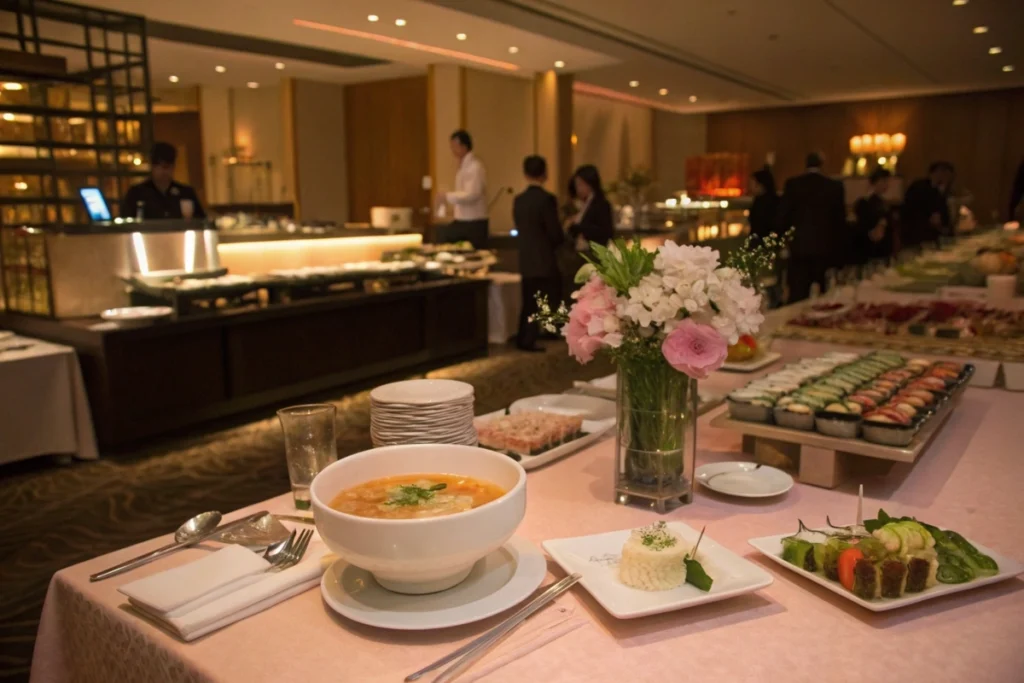
FAQs
Below are answers to common questions surrounding what is miyabi food in japanese and its broader cultural significance:
What exactly does “miyabi” mean in Japanese culture?
Miyabi translates to “refinement” or “elegance,” stemming from Heian-era aristocratic values. It emphasizes grace, minimalism, and a polished aesthetic in various art forms, including cuisine.
How is miyabi different from wabi-sabi or iki?
While wabi-sabi celebrates rustic simplicity and iki denotes stylish chic, miyabi elevates delicacy and polished refinement. It typically reflects the aristocratic tastes of historical Japan, focusing on a sense of grace and subtle luxury.
Is miyabi just about visual presentation?
Not entirely. Although visuals play a major role, miyabi also involves flavor harmony, thoughtful ingredient selection, and creating a calm, elegant dining atmosphere. It’s a holistic approach to beauty and taste.
Where can I find miyabi soup or miyabi onion soup?
Many “Miyabi Japanese” restaurants, often in Western countries, serve a variant of clear broth with onions and mushrooms. Some upscale Japanese eateries also offer refined soups or broths under different names, adhering to miyabi principles.
Do I need special tools to cook miyabi-style at home?
Not necessarily. Sharp, high-quality knives and simple, tasteful plates can help you replicate the minimal aesthetic. Focus on fresh, seasonal ingredients and subtle seasoning to achieve the right balance.
Can miyabi be applied to desserts and drinks?
Absolutely. Desserts like matcha mousse or wagashi can incorporate miyabi through understated sweetness and elegant plating. For drinks, consider serving sake in slender cups or minimal glassware that complements the calm ambiance.
How do I introduce miyabi aspects if I’m new to Japanese cuisine?
Start small—prepare a clear soup, garnish with a single piece of vegetable cut into a delicate shape, and serve it in a minimal bowl. Over time, explore more complex dishes and refine your plating skills.
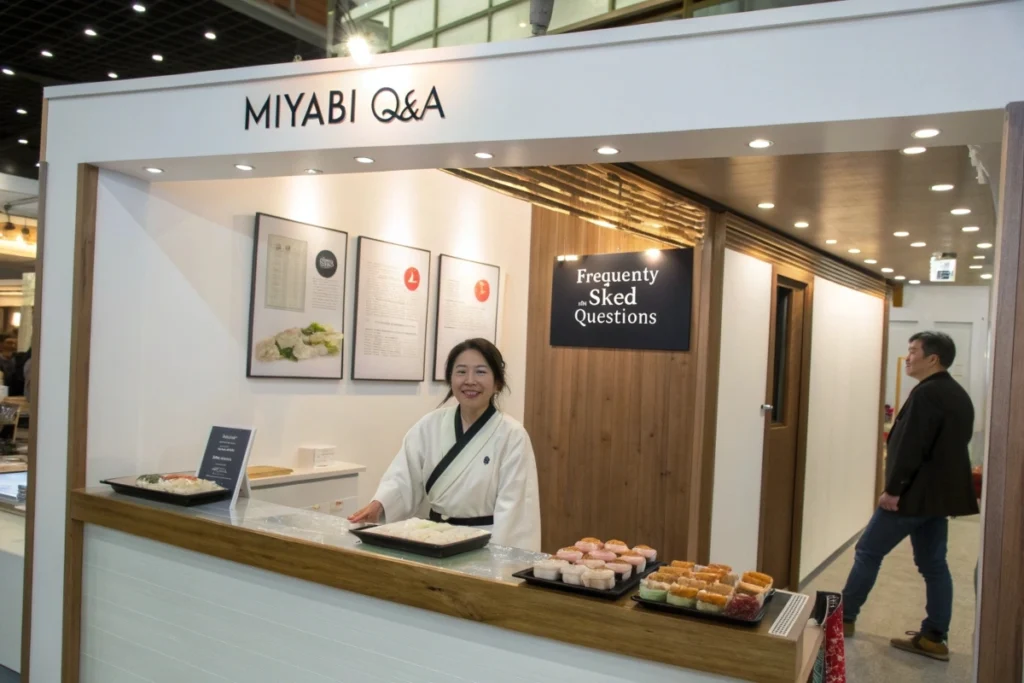
Conclusion
At its heart, what is miyabi food in japanese if not a harmonious blend of refined taste, subtle beauty, and cultural depth? Born from ancient aristocratic ideals, miyabi transcends mere plating or ingredient choice. It’s a mindset that values understated elegance—every garnish has a purpose, every flavor is balanced. By appreciating miyabi, we gain access to a gentler, more artful side of Japanese cuisine, one that invites us to savor meals in an unhurried, contemplative manner.
Whether you’re experimenting with a delicate miyabi soup at home or seeking out a “Miyabi Japanese” restaurant, keep in mind the foundational pillars: minimalism, high-quality ingredients, and seasonally informed presentation. Even small adjustments—like choosing a neutral plate or adding a single blossom as garnish—can bring you closer to the miyabi spirit. For those who want to delve deeper, exploring easy Japanese recipes can help broaden your culinary repertoire, enhancing your ability to craft refined meals.
Ultimately, miyabi isn’t just about achieving visual prettiness; it’s a testament to mindful living and deliberate craftsmanship. By introducing these principles into your cooking and dining space, you transform each meal into a peaceful ritual, celebrating the ephemeral pleasures of taste, sight, and cultural heritage.
